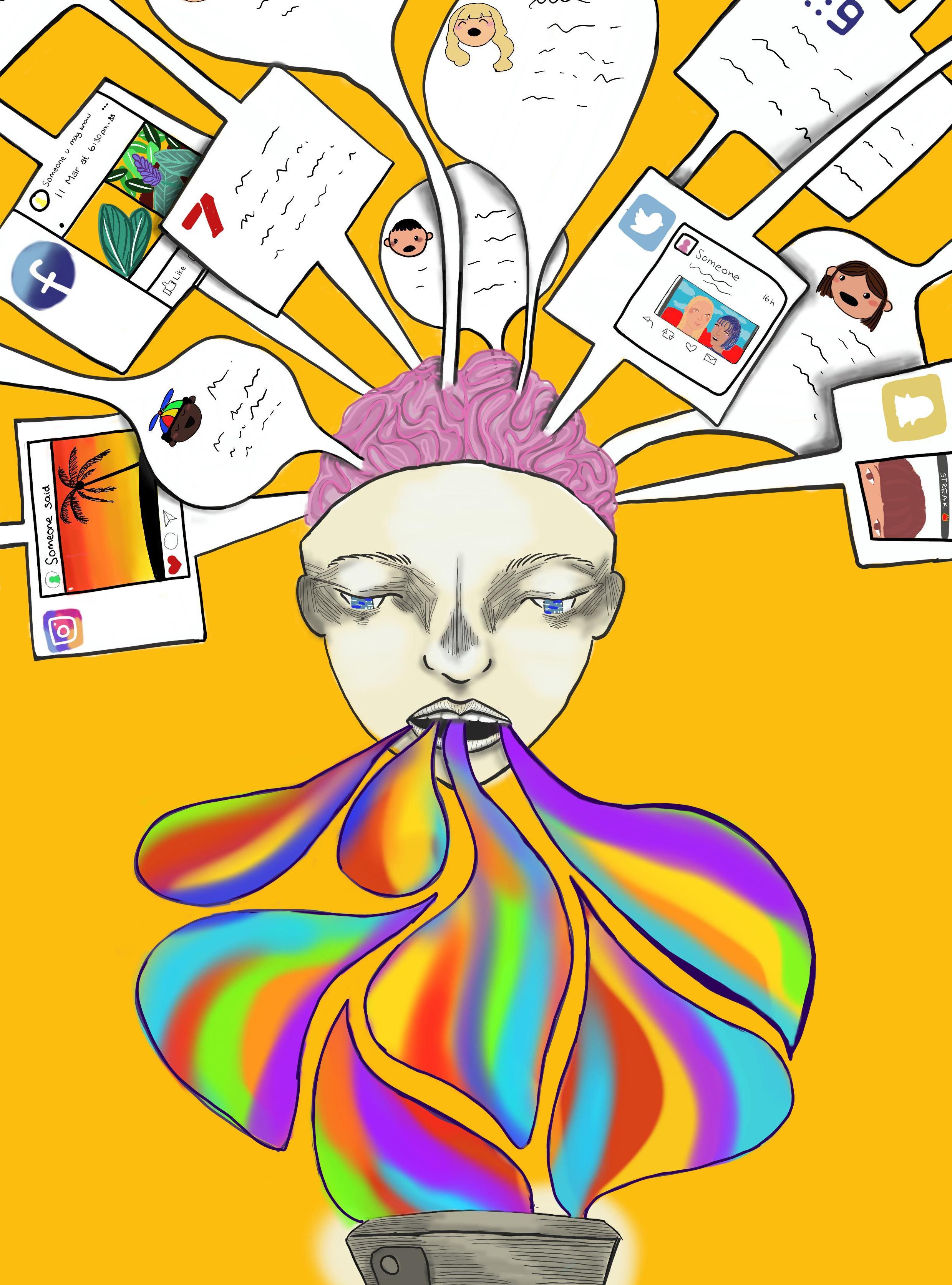
2 minute read
Inbetweenness Madeleine Martin 026 #Me#You Jelena Xu
INBETWEENNESS
Can’t fit Pattern Recognition in my backpack.
William Gibson’s 2003 prescient techno-fable follows Cayce Pollard, a marketing consultant and ‘cool-hunter’ with an unbearably useful pathological sensitivity to corporate logos. Cayce is tasked with tracking-down the maker - distributor? - of a series of anonymously published video clips which have surfaced on internet forums.
Cayce inhabits liminal spaces. Airports. Hotels. Cyberspace. Places of inbetweenness.
Part-way through reading, I set off for Venice.
This last week, international press and social media have been flooded with images of the Veneto capital’s acqua alta. 1 Military personnel thigh-deep in water in f ront of the Italo-Byzantine Basilica di San Marco. Marooned vaporetti, the Venetian public waterbuses, emblazoned with Biennàle Arte 2019. Outdoor bistro stacking chairs bobbing along il Piazza San Marco. Ill-prepared tourists hauling giant hard-shelled suitcases on their backs like turtles.
Determined not to be one of those turtles. Instead, like Gibson’s Cayce, I will navigate the path of global travel as a minimalist.
My copy of Pattern Recognition awaits my return.
Forty hours of travel and f ive modes of transport lead me to Via
Garibaldi. To a French-themed, but inescapably Venetian, cafe-bar called CheBon. Drinking a Cynar spritz. Two ice cubes, slice of orange, green olive. Soul is AWOL. Body is cruising on auto-pilot. Capacity to affect and be affected is compromised.
Cayce, too, has experienced this:
by Madeleine Martin
…her mortal soul is leagues behind her, being reeled in on some ghostly umbilical chord down the vanished wake of the plane that brought her here … Souls can’t move quickly, and are left behind, and must be awaited, upon arrival, like lost luggage. 2
With soul separated by sixteen-thousand kilometres f rom owner, it proves diff icult for affect to arise. Beings are constituted “not by an outer skin-envelope or other surface boundary but by their potential to reciprocate or co-participate in the passages of affect.” 3 These, reciprocation and co-participation, are roles for the soul, not the body.
Body plus soul equals cognitive being. Body minus soul equals … something fragmented. Don’t have an ETA for my soul.
Three cities later.
Arrive at a tiny ground-floor apartment on Rue Véron. Dispassion of the entryway is eerie. The soul of the apartment is separated by modern security technology f rom the body of Paris.
Inside, backpack down. Take stock of utilities. Not quite like the pictures. Less art direction. Less art. Less direction. On the bookshelf, printed detritus, floating remnants of anonymous travel.
And one novel.
Anotherbody’s copy of Pattern Recognition.
In that moment, intensities pass f rom body to body, f rom book to me and back again, circulating and sticking to whatever it can. Coincidence is an obvious manifestation of “the world’s apparent intractability”. 4
It is clear now that soul and body have re-coalesced. Capacity to affect and be affected is optimal.
1 Pun intended.
2 W. Gibson, Pattern Recognition, London, Penguin Books, 2003, p.1.
3 M. Gregg and G. J. Seigworth, ‘An Inventory of Shimmers’ in Gregg, M. and Seigworth, G. J. (eds.) The Affect Theory Reader, Durham, Duke University Press, 2010, p.1.
4 Ibid.






